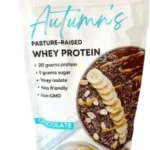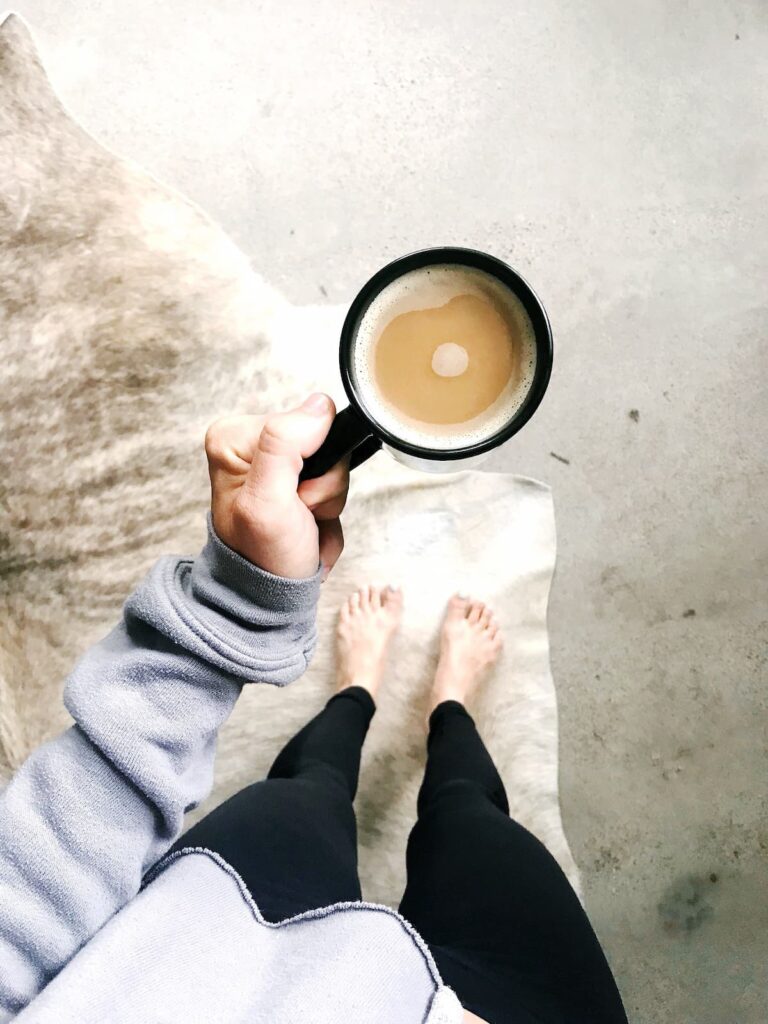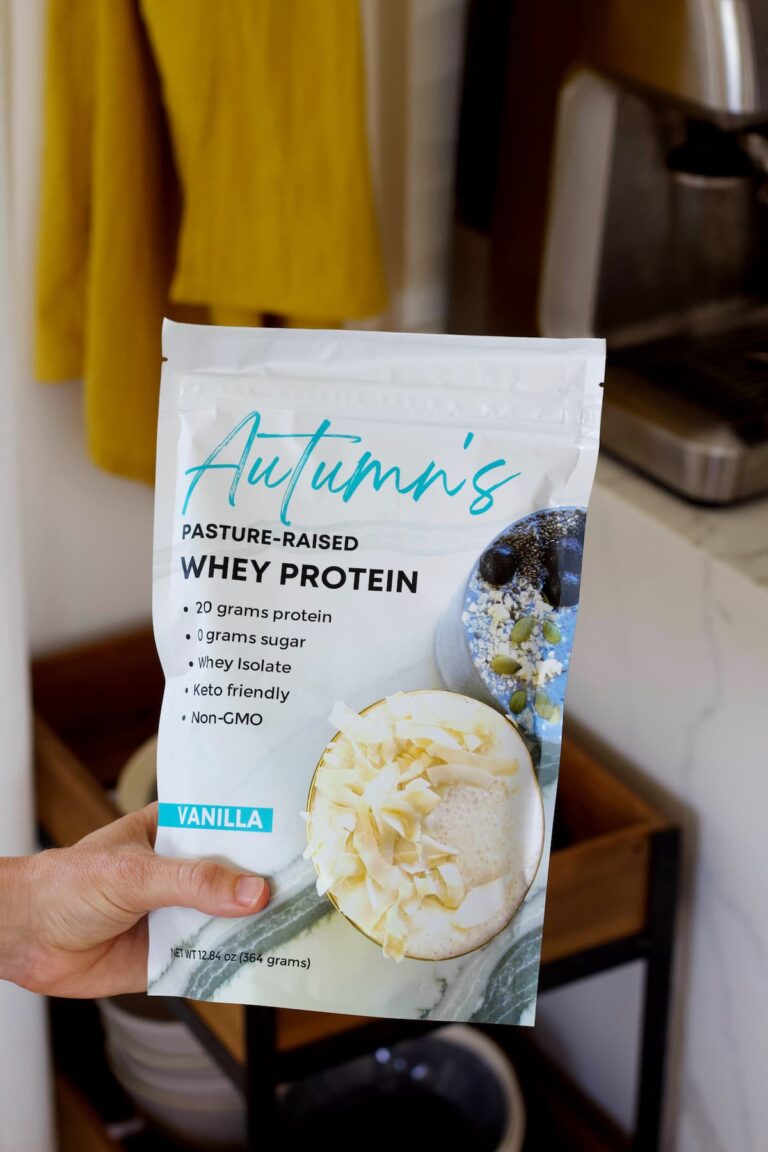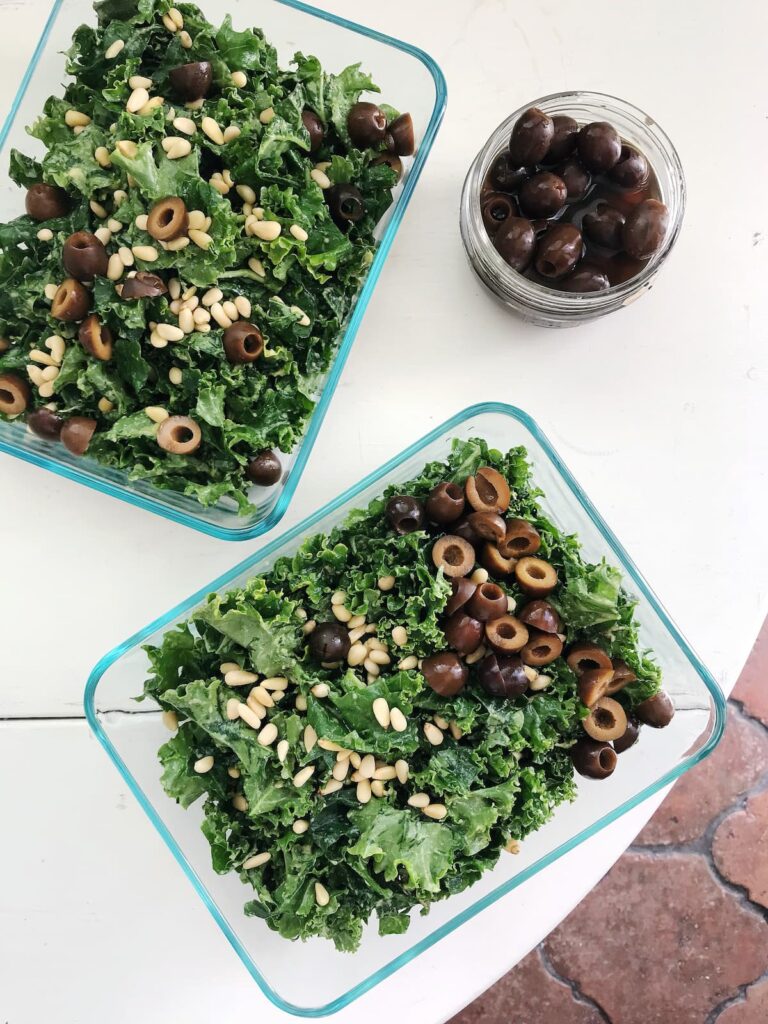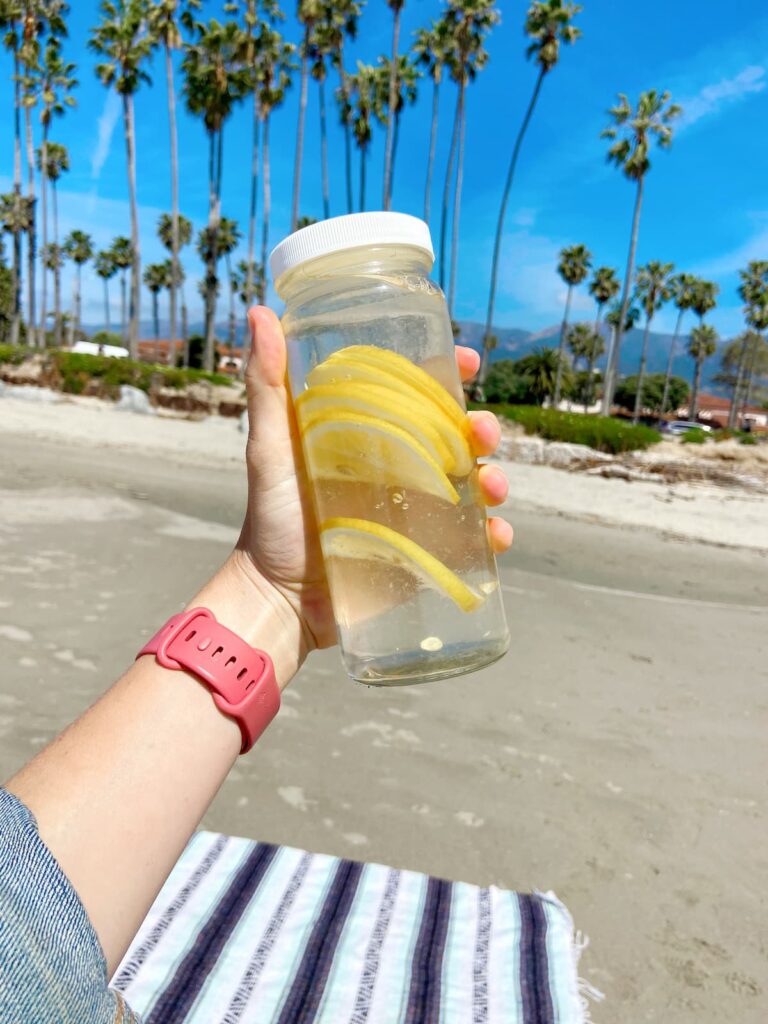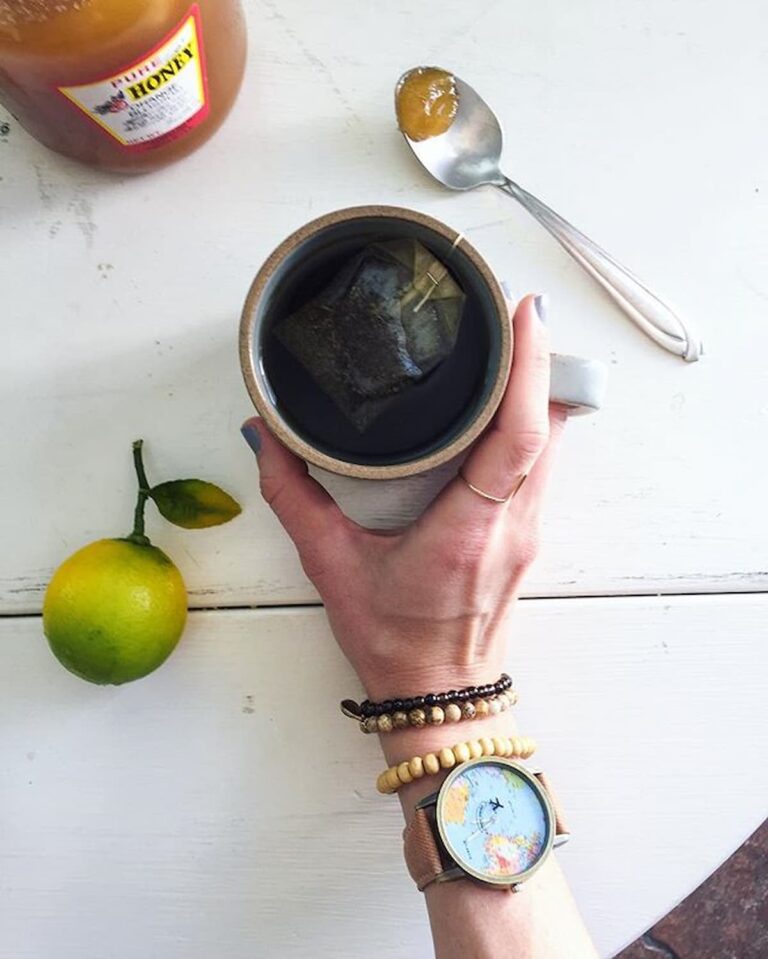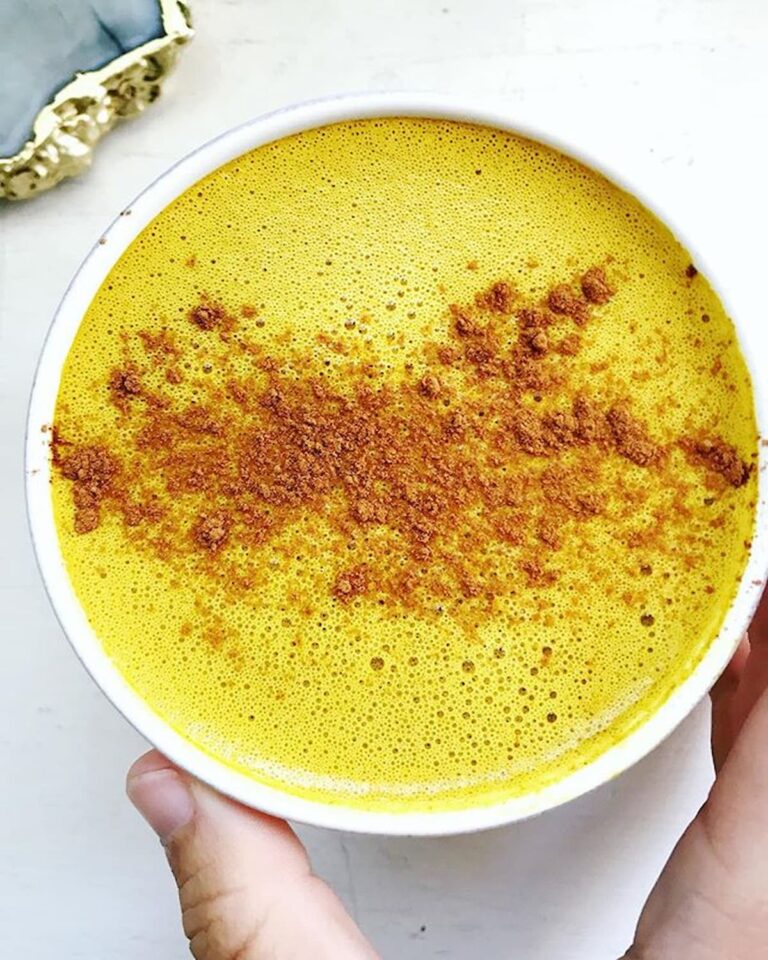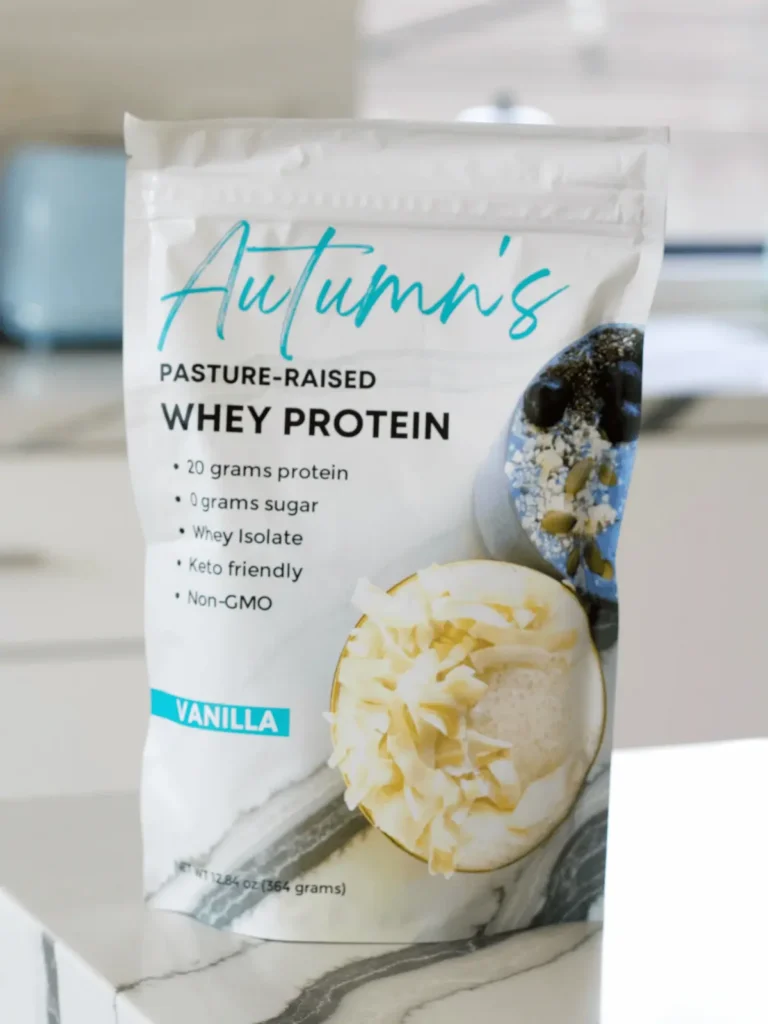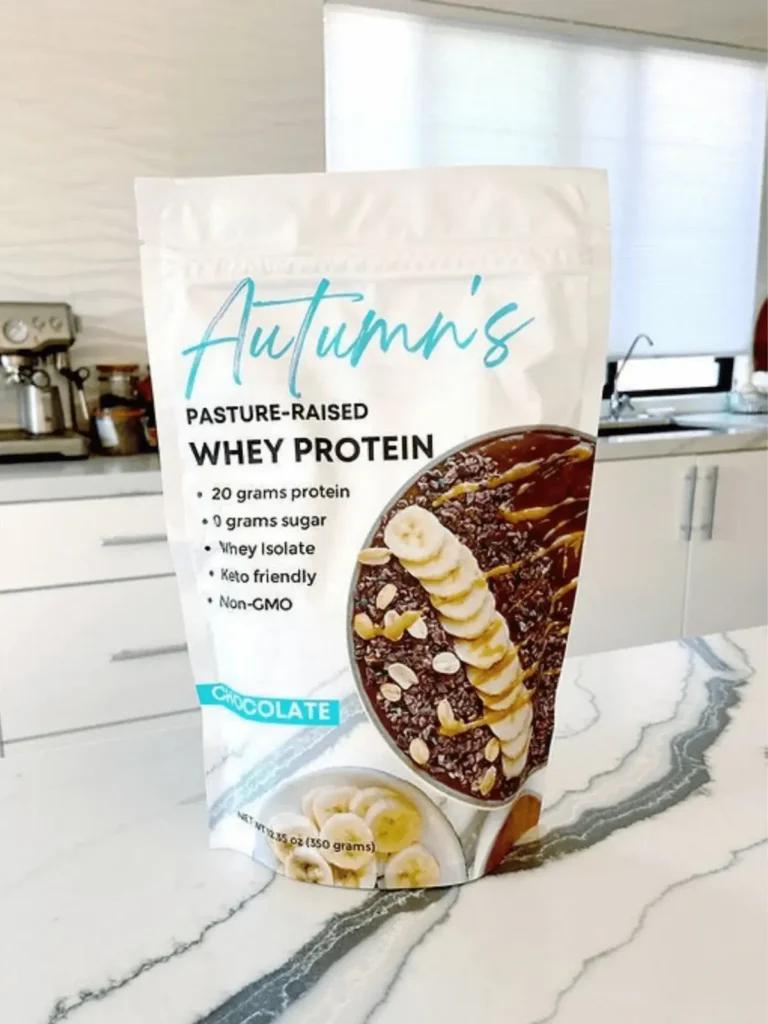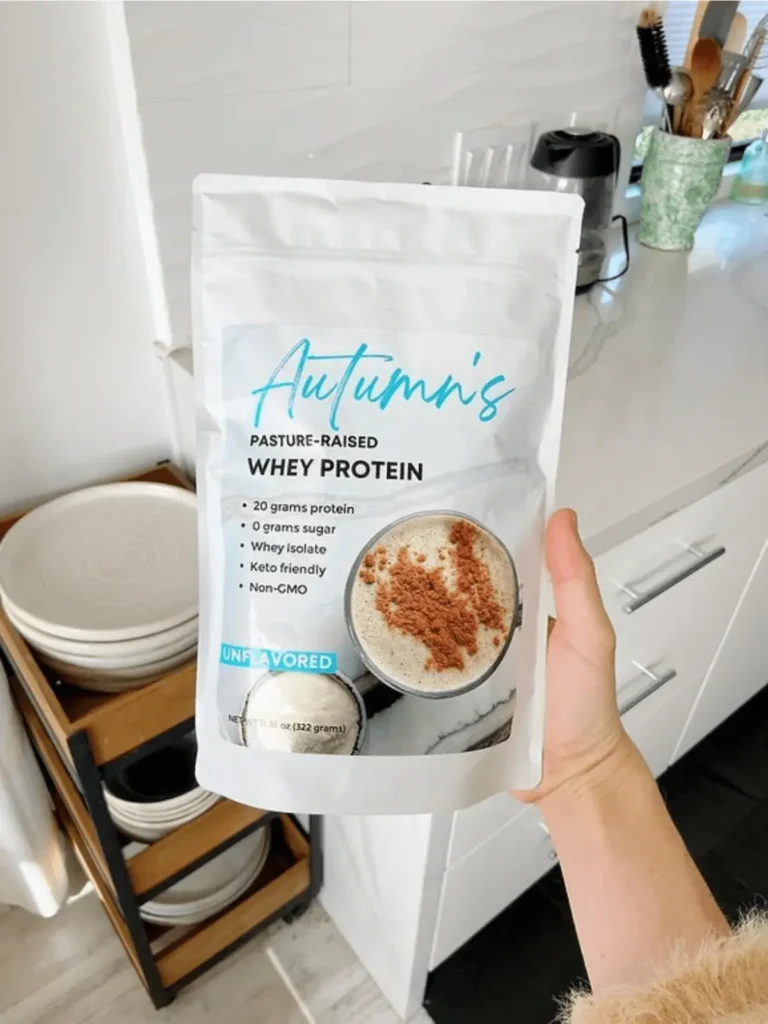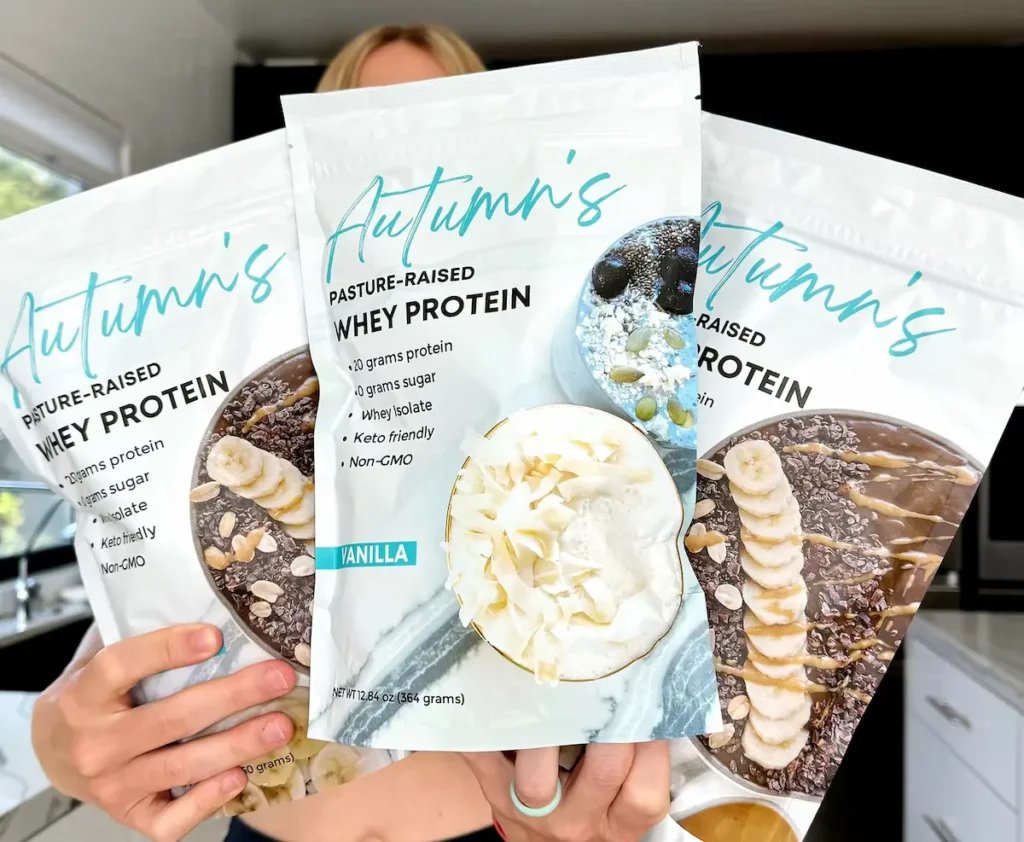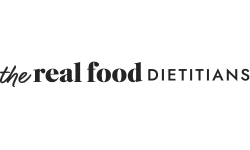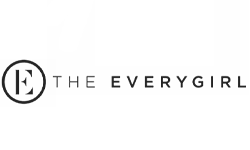These are the recipes, workouts and supplements I’m using to lose 15 pounds postpartum without counting calories.
A few months ago, I had my second baby (hi Jack!). I had an absolutely wild labor — I was about to go to bed when my water broke. Contractions kicked in immediately and 61 minutes later, Jack was born at home! We joke that my labor was basically a quick HIIT workout, it was so speedy.
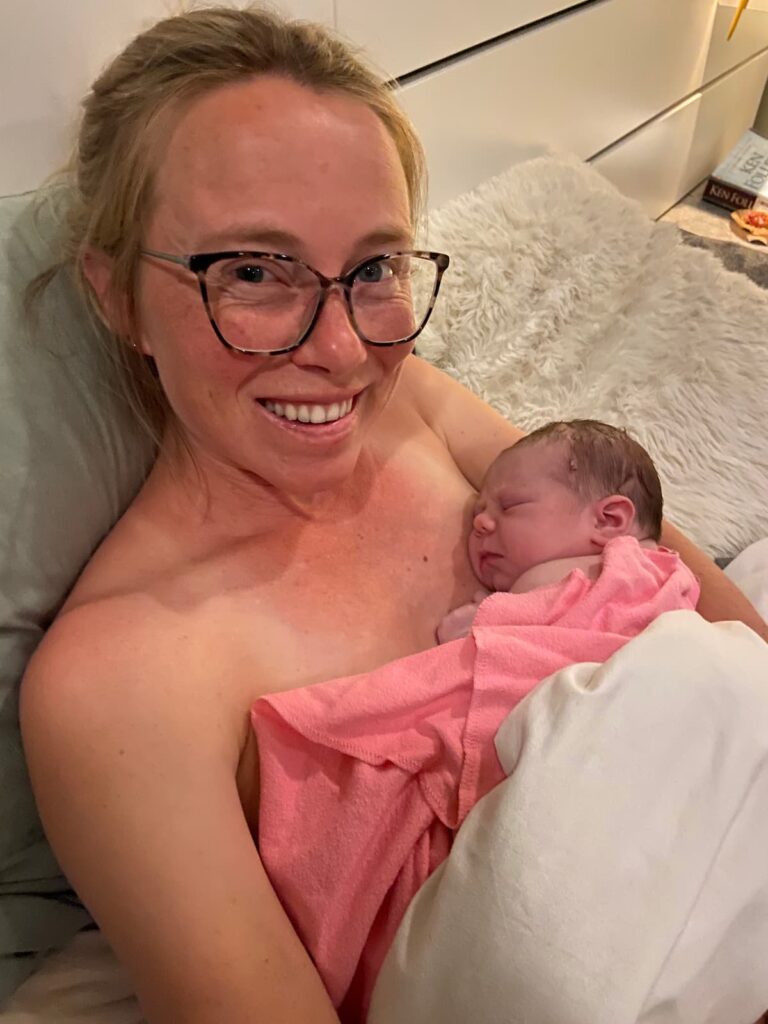
As an obvious and natural part of pregnancy, I gained about 15 pounds of body fat. Now that I’m postpartum, I’m starting to shift my focus to losing the extra fat while also supporting my recovery and breastfeeding journey.
Unfortunately, I’ve seen a lot of women fall into the trap of just “eating less” and “moving more” to try and lose the baby weight. This often can result in a slower metabolism, increased hunger and a lower milk supply.
Today I’m sharing my postpartum weight loss plan (including recipes, exercise and supplements that I’m taking) to burn fat while also eating nutrient dense and satiating foods.
This is similar to what I followed after having my first baby and losing 20 pounds while still successfully breastfeeding my daughter until she was over one year old.
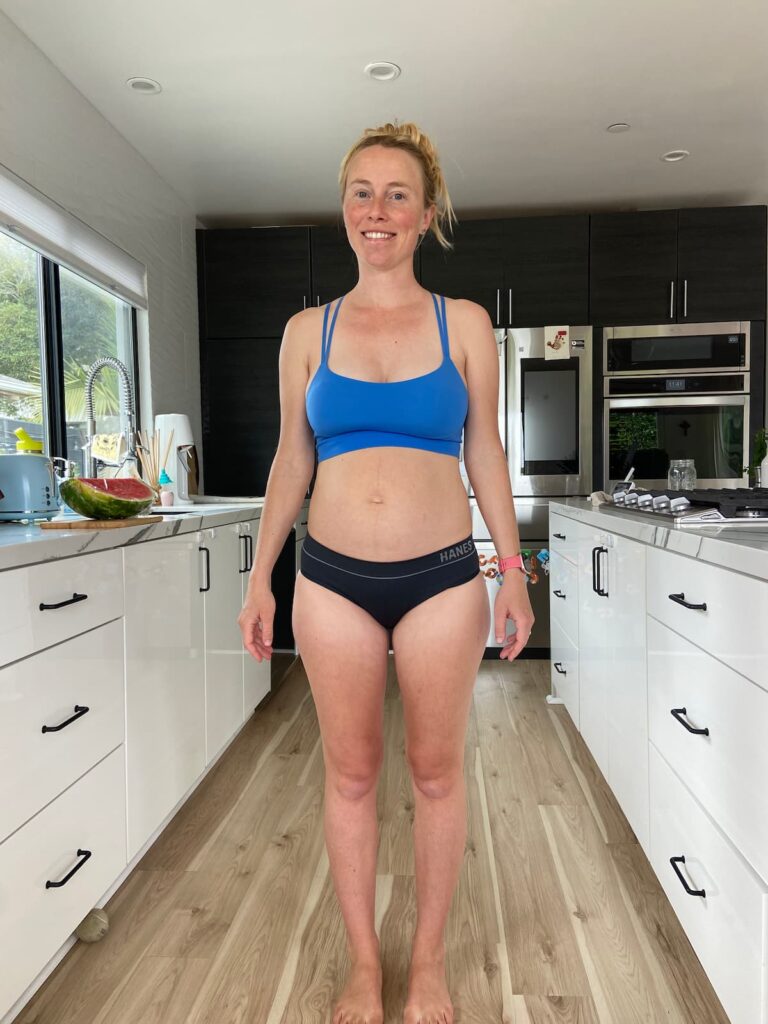
My Goals + How I Measure Progress
My postpartum goals are threefold:
- lose 15 pounds body fat (not weight) with a long term goal of 20-22% body fat
- eat nutrient dense foods to support breastfeeding
- rebuild my strength and maintain muscle
As I shared with my last postpartum weight loss journey, it’s very important to me that my meals and lifestyle not only support my fitness and fat loss goals, but also breastfeeding.
Focusing on fat loss rather than weight loss helps to ensure that the weight I lose isn’t coming from muscle mass. When you focus on keeping muscle while losing fat, you’re able to maintain an active and speedy metabolism while improving your body composition.
Typical “eat less, move more” strategies often result in significant muscle loss which causes the metabolism to slow down. As the metabolism slows, it forces you to eat less and less and less, ultimately making the fat loss progress harder to maintain. That’s why old school calorie counting/tons of cardio often results in weight regain.
Instead, by focusing on keeping muscle and prioritizing fat loss I’m able to avoid a slow metabolism and maintain my results for the long term with a lot less effort.
Because of this, I won’t be measuring my progress with a typical scale. A typical scale only tells me how much I weigh. It does not show how much of that weight is from muscle or fat.
In order to get that information, I’m using two different measurements in conjunction with a typical scale:
- tape measurer
- InBody
A tape measurer is a cheap and effective way to determine if I’m losing fat. As measurements get smaller, it indicates that my body is specifically losing fat.
Below are my “before” measurements (as of June 17th, 2025):
- waist – 31 inches
- hips – 41 inches
Once I’m back at the gym, I’ll also be using the InBody, which is a type of fancy scale that also measures body fat and muscle mass. This will give me more concrete date on my body fat percentage and how much muscle mass I’ve lost, gained or maintained while losing fat. I like using an InBody to give me specific feedback on whether or not I need to make some changes.
For example, if a notice that my muscle mass is starting to go down, I might add more protein or up my resistance training. If I see that my muscle is staying the same or even going up, I’ll keep doing what I’m doing (because clearly things are working!).
I go into much more detail for how to use the InBody to track your progress in my Body Recomposition Program. This is the program that I followed after my first pregnancy to lose 20 pounds of fat. Below are my results from following that program’s meals and strategies.
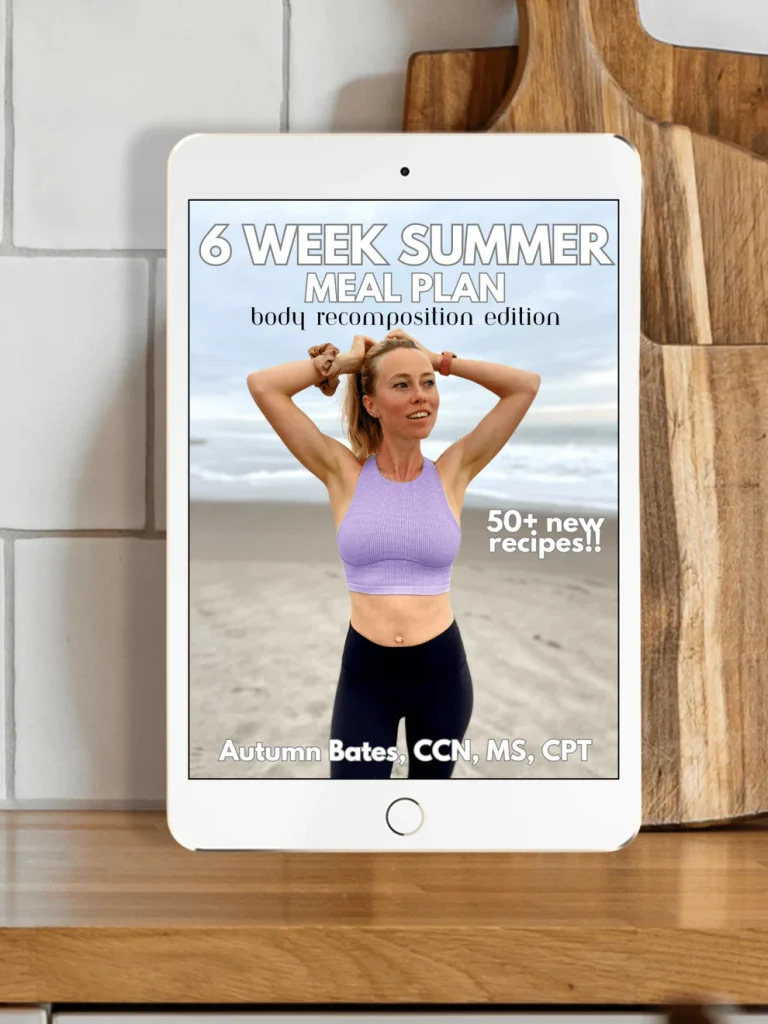
50+ NEW RECIPES!
The Body Recomposition
Meal Plan
The 6 Week Summer Meal Plan is focused on the science-backed tips, tools and recipes to help achieve a body recomposition goal.
You can often find the InBody at most gyms, you’ll just need to ask the front desk where it is and how to use it. I haven’t gotten my baseline InBody yet, but once I do I’ll be updating this post with those results as well.
In order to achieve these goals, I’m focusing on four things: my diet, exercise, supplements and sleep.
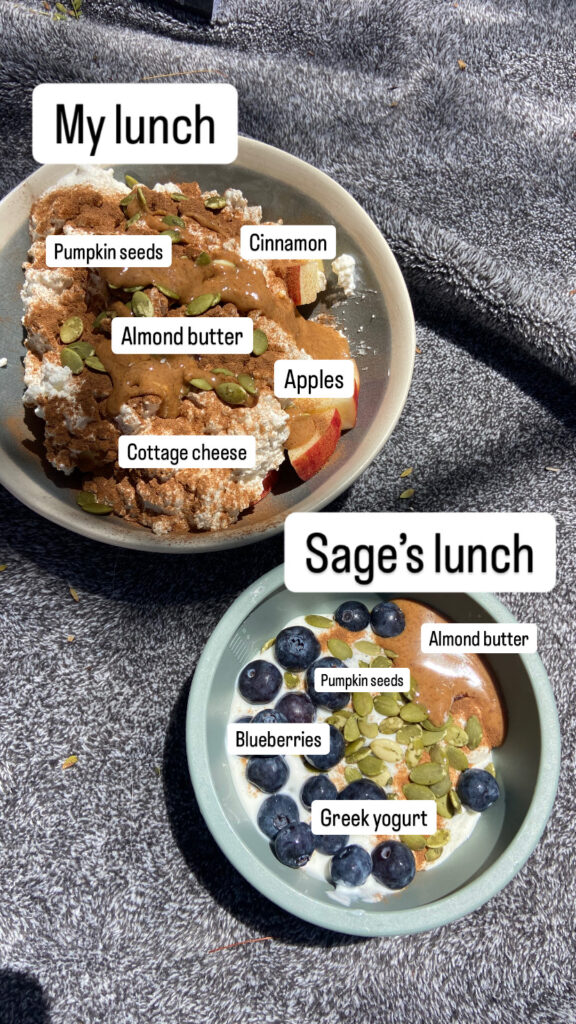
Postpartum Diet
What I eat will have the greatest impact on my fat loss journey. Eating the proper balance of protein, fat and fiber can help to reduce hunger, prevent muscle loss and prioritize fat loss. It’s also with my diet that I’m able to provide the necessary nutrients to support my breastfeeding journey.
Here’s a breakdown of how I’m structuring my meals:
(You can get this information in much more detail, plus the recipes in my Body Recomposition Program.)
Protein
Eating enough protein is required to prevent hunger and keep muscle. It’s a non-negotiable. A plethora of studies have found that eating a higher protein diet is effective at burning fat while keeping muscle. It also helps to reduce sugar cravings and naturally lowers your overall intake.
To reap the benefits of a higher protein diet, I’m aiming for about 120 grams of protein per day. This breaks down to about 40 grams of protein per meal.
The nutrient-dense protein sources I’m focusing on include:
- Greek yogurt
- Cottage cheese
- Chicken
- Beef
- Eggs
- Whey protein powder
- Whole milk
Kickstart Your Journey
Shop Autumn’s Whey Protein Powder
Our delish bestselling zero added sugar, gluten & heavy metal tested whey protein powder!
Fiber and Carbohydrates
While breastfeeding, my hunger SKYROCKETS. Protein helps to reduce my hunger and prevent cravings, but I’ve found upping my fiber in addition to increasing protein helps to drastically reduce it further.
Plus, high fiber carbohydrates tend to be lower glycemic load. This means they don’t cause a large blood sugar spike and crash which is crucial for long term health and fat burning.
The high fiber foods I’m focusing on include:
- lentils
- black beans
- chickpeas
- leafy greens
- cruciferous veggies
- berries
- cacao nibs
- chia seeds
In addition to high fiber foods, I’m also removing all forms of added sugar. Especially right now when sugar cravings can easily skyrocket due to lack of sleep and breastfeeding, I’ve found that eating any added sugar can make me spiral and crave sugar all day.
You might have noticed that I’m not counting calories. This is intentional and typically unnecessary when focusing on protein, fat and fiber while cutting out added sugars. You can find a more detailed breakdown of why I don’t count calories with the video below.
Meals and Recipes I’m Eating
Throughout my weight loss journey, I’ll be sharing what I eat on my YouTube channel and Instagram, but below are some examples of the recipes I’ll be making that follow the above dietary protocols:
Meals and Recipes I’m Eating
Throughout my weight loss journey, I’ll be sharing what I eat on my YouTube channel and Instagram, but below are some examples of the recipes I’ll be making that follow the above dietary protocols:
Breakfast
- Chocolate chip protein waffles
- 3 eggs with 1 slice real sourdough toast, plus coffee with whole milk
- Protein yogurt bowl with peaches, pumpkin seeds and bee pollen
- High protein, low sugar smoothies
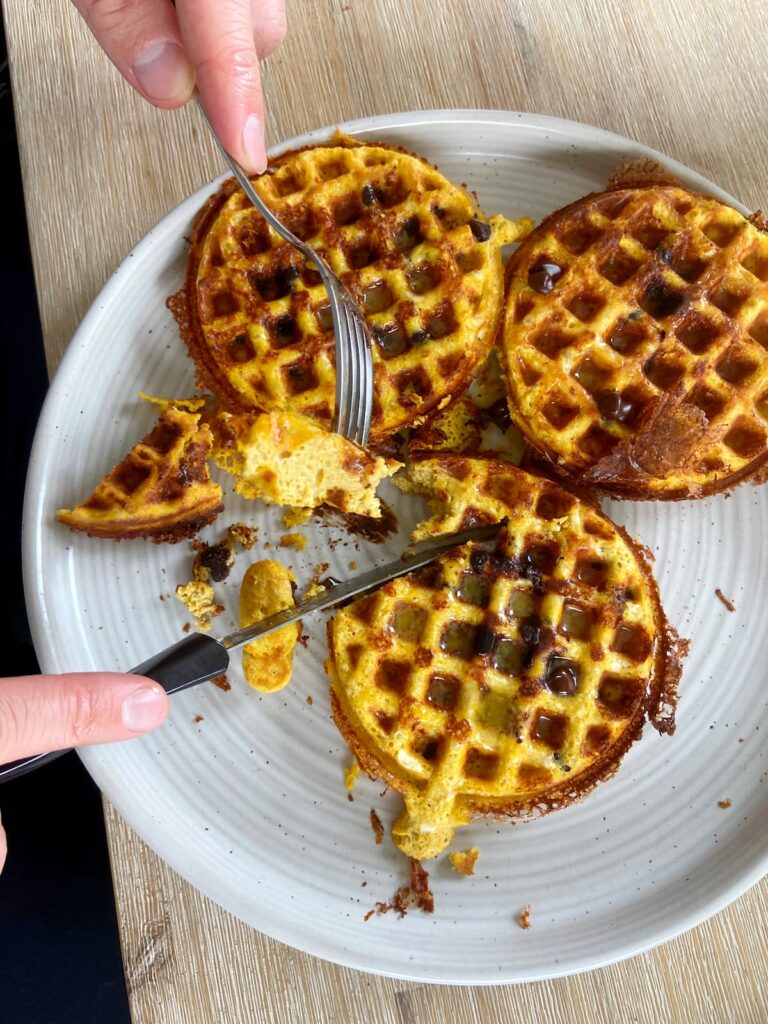
Lunch
- Kale salad with grilled chicken, pickled red onions, spicy olives and balsamic/olive oil
- Cottage cheese bowl with almond butter, apples and cinnamon
- Protein “Chocolate Milk” (paired with a meal)
- Leftovers from dinner
Dinner
- Beef tacos with black beans and spicy slaw
- High protein “pasta” with meatballs
- Chickpea salad with beef kefta
- Low Carb Shepherd’s Pie
I’ve also created a free 5 Day High Protein Meal Plan that’s perfect for beginners. Plus, all of the meals are simple and delicious! You can find my free 5 Day High Protein Meal Plan here.

Exercise
To prevent pelvic floor injuries, I’m slowly easing back into exercise. This method can help to reduce future injuries, prevent back pain and reduce the risk of long term pelvic floor issues like incontinence.
Phase 1: walking + pelvic floor exercises
Until I’m cleared for true “exercise”, I’m focused on increasing my steps and doing daily pelvic floor exercises.
My pelvic floor exercises are postural and breath focused movements that take me about 10 minutes a day to complete. These were prescribed to me by my pelvic floor PT and include movements like diaphragmatic breathing, modified bird dog and pelvic tilts.
I’m currently aiming for about 10,000-12,000 steps per day. I like to go for one long walk in the morning with my husband, daughter and son. That walk gives me about 7,000 steps. I then add in a few smaller walks throughout the day to fill in the final 3,000-5,000 steps. I use this step tracker to check in on my progress.
Phase 2: resistance training and pilates
Once I’m cleared for true exercise, I will slowly start adding in resistance training and pilates. This type of exercise combined with eating enough protein helps to maximize for fat loss while minimizing muscle loss.
Once I’m about 8 weeks postpartum, I’ll begin adding in resistance training.
I first start off with app-based workouts like the PWR program from the Sweat app. I followed this program after my last pregnancy and found that it helped provide a great base for me before I moved on to more traditional strength training. I like that the PWR program is progressive and increases in intensity as the weeks go on, which helps my body to continually build in strength as well.
After this initial 12 week PWR program, I’ll switch to traditional strength training with movements like deadlifts, squats and presses. These movements aim to further increase my strength, boost my metabolism and improve my body composition.
I also like to do pilates once a week to specifically focus on improving my core strength after pregnancy. There’s a local reformer pilates studio that I’ll start going to again once I’m cleared for exercise.
Supplements
The right type of supplements help to provide the final touches to my diet and exercise program. Below are the supplements that I’m taking.
Protein Powder
I love adding protein powder to my smoothies, protein pancakes, protein waffles and yogurt bowls. It’s an easy way to add a lot of protein to support my body recomposition goals.
I use our zero added sugar vanilla protein powder in a ton of recipes (like my chocolate chip protein waffles). I also will use our zero added sugar chocolate protein powder to make “protein chocolate milk” to have alongside my breakfast or lunch.
Kickstart Your Journey
Shop Autumn’s Whey Protein Powder
Our delish bestselling zero added sugar, gluten & heavy metal tested whey protein powder!
Creatine
I started using creatine after my first pregnancy to help reduce postpartum brain fog and support strength training workouts. I’ve started taking creatine again to specifically help my brain function during the newborn sleep deprived stage.
Taking creatine everyday has been a game changer for me while I’m only getting a few hours of sleep per night. Even though I’m sleep deprived, I’m still able to mentally function and get some work done.
I’m currently testing out a few different creatine brands (stay tuned for my final reviews), but I like to look for brands that use either creatine monohydrate or creapure as its main ingredient.
Electrolytes
Because I’m drinking so much water while breastfeeding, it’s important that I’m also taking in more electrolytes. I’ve found that if I can drink enough water, take my electrolytes, have creatine and get outside for a walk everyday, I’m able to feel human again even though I’m severely sleep deprived.
I personally use LMNT electrolytes — the grapefruit salt flavor is my favorite. I like to make a grapefruit mojito with the LMNT electrolytes, fresh lemon juice, sparkling water and mint. So tasty!
You can try out LMNT electrolytes here.
Magnesium
As any new parent knows, sleep deprivation is just part of the journey. To help maximize the quality of the sleep that I get, I like to take a magnesium supplement every night before bed.
Sleep
Unfortunately, poor sleep can really hinder fat loss progress. This is because poor sleep increases hunger hormones, spikes sugar cravings and increases our preference for sugary, processed foods.
Even though sleep is no where near perfect right now, I’m still working on optimizing the sleep that I am able to get.
Below are the sleep tips that I use:
- Go to bed when baby goes to bed (yes, this means my bedtime is usually around 7:30-8pm)
- Take a magnesium supplement
- Don’t watch tv at least 1 hour before bed
- Get outside during the day (this helps to raise the sleep hormone at night)
- Try and get baby on a sleep schedule (we’ve followed the course “Taking Cara Babies” with both of our kids and have had great success so far)
My Final Thoughts
This is my second postpartum weight loss journey and I feel so much more prepared and confident than I did the first time around because I now have both the science-backed knowledge and the experience.
These tools are backed by research and they’ve helped me sustainably lose 20 pounds in the past while feeling energized and healthy.
As I said after my last weight loss journey post, there’s something quite nice about “starting over” and rebuilding the health and fitness pillars that make me feel (and look) my best.
Instead of feeling daunted by the task, I’m actually looking forward to the process of taking time for my health and wellness goals again.
Other Posts You May Love
- How I lost 16 pounds in 8 weeks without counting calories
- 17 delicious high protein smoothies for breakfast
- 15 healthy dessert ideas that won’t ruin your results
